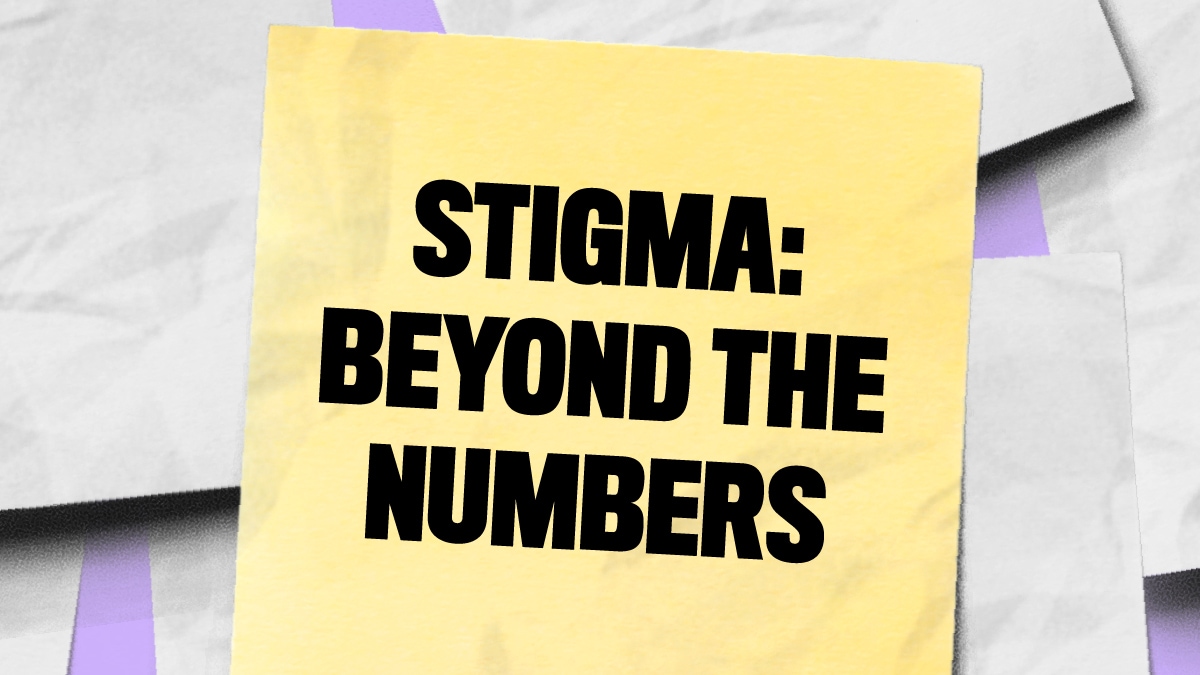At a glance
- Stigma makes it harder for people with substance use disorders to get help.
- Get tips on how to talk about substance use disorders and learn about other direct actions you can take to reduce stigma to support recovery.

Stigma's impact on substance use disorder
Substance use disorders (SUDs) affect people, families and communities in several ways. While SUDs create impairment or distress that can cause an individual to struggle at work, school, or home, this does not look the same for everyone. For many, SUDs are hidden struggles. For some, it can be a part of their daily lives, and through it they maintain personal and job commitments. For others, it may lead to loss of relationships, loss of employment, loss of housing, loss of parental rights, criminal convictions, or loss of life.
What is important to know is each person has their own life history and feelings about their experiences. Each faces unique barriers to recovery, and each deserves compassion, support, and access to recovery and treatment services.
How to talk about substance use disorders to help reduce stigma
When speaking to or about someone who is experiencing a substance use disorder, words matter. Consider using these recommended terms to reduce stigma and negative bias when talking about drug use and substance use disorders.12
Do say
Don’t say
Person with a substance use disorder (or alcohol use disorder)
- Addict
- Junkie
- Alcoholic
- User
Person who uses drugs
Dirty
- Being in remission or recovery
- Abstinent from drugs
- Not drinking or taking drugs
- Not currently or actively using drugs
Clean
Substance use disorder
Drug habit
- Drug use (illicit drugs)
- Drug misuse (prescription drugs)
Drug abuse
Person in recovery or long-term recovery
Former addict
Reducing the harm of substance use disorder stigma
Any person, no matter their age, geographic location, or socioeconomic background, is potentially at risk for developing a substance use disorder (SUD) when taking substances with potential for addiction. An SUD is a treatable, chronic disease, characterized by a problematic pattern of use of a substance leading to clinically significant impairment or distress.3 SUDs can result in significant problems in a person's work, school, or home life.
In 2022, nearly 49 million people aged 12 or older reported a presence of an SUD in the past year.4
Help those with SUDs and those around them to lessen the damaging effects by addressing stigmatizing beliefs and actions.
Increasing education and awareness
Understanding the treatment and recovery options available to those with SUDs as well as how to help prevent substance use and SUDs in the first place can make a difference. Prevention strategies include helping people avoid exposure to drugs and increasing education, awareness, and paths to healthier outcomes. SAMHSA's National Helpline is free, confidential, 24-7, 365-days-a-year treatment referral and information service for individuals and families facing mental and/or substance use disorders, SAMHSA's National Helpline | SAMHSA.
Promoting health equity in overdose prevention
More focus on social determinants of health is critical to drug overdose prevention. Social determinants of health are life factors like housing, employment, and geographic location that have known relationships with a person's health and wellness. Conversations about health equity as it relates to SUDs raise awareness of the higher degree of harm experienced by Black, Indigenous, and people of color (BIPOC) communities, non-heterosexual people, or people with mental illness.
Connecting people with opportunities for meaningful treatment and recovery
Treatment and recovery can look different for everyone and may vary based on what an individual needs. The approach can vary based on the type(s) of drugs someone is using.56 Treatment options may include medication or behavioral therapy, or both, and the setting (inpatient versus outpatient) where treatment occurs also considers a person's needs. When a person makes a commitment to recovery, what's important is that they are provided with consistent, positive support, free from stigma regardless of approach. A person who is in an SUD or mental health crisis deserves care that is free from judgment and designed to address their needs.
Using a people-first approach/mindset
If you know a person struggling with SUD, it may be helpful to use what is sometimes referred to as a whole-person or person-first approach. That means that their SUD should not be thought of as the trait that defines them. Think about what you know about that person. Are they a parent or sibling? What kind of work do they do? What are their personal interests? Understanding that a person is more than their illness helps to break down concerns and stigma and can help that person ask for and receive help that is matched to their needs.
Several programs and people are available to help those with SUDs, their families, loved ones, and their communities. Thoughtful conversation based on a desire to understand can help people with the emotional and physical healing they need to recover and thrive.
- Remove Stigma: Talk to Your Patients About Substance Use Disorder.
- https://nida.nih.gov/nidamed-medical-health-professionals/health-professions-education/words-matter-terms-to-use-avoid-when-talking-about-addiction
- Substance Use and Co-Occurring Mental Disorders - National Institute of Mental Health (NIMH) (nih.gov)
- https://www.samhsa.gov/data/sites/default/files/2022-12/2021NSDUHFFRHighlights092722.pdf
- https://www.samhsa.gov/resource/ebp/tip-42-substance-abuse-treatment-persons-co-occurring-disorders
- https://www.asam.org/quality-care/clinical-guidelines/national-practice-guideline
